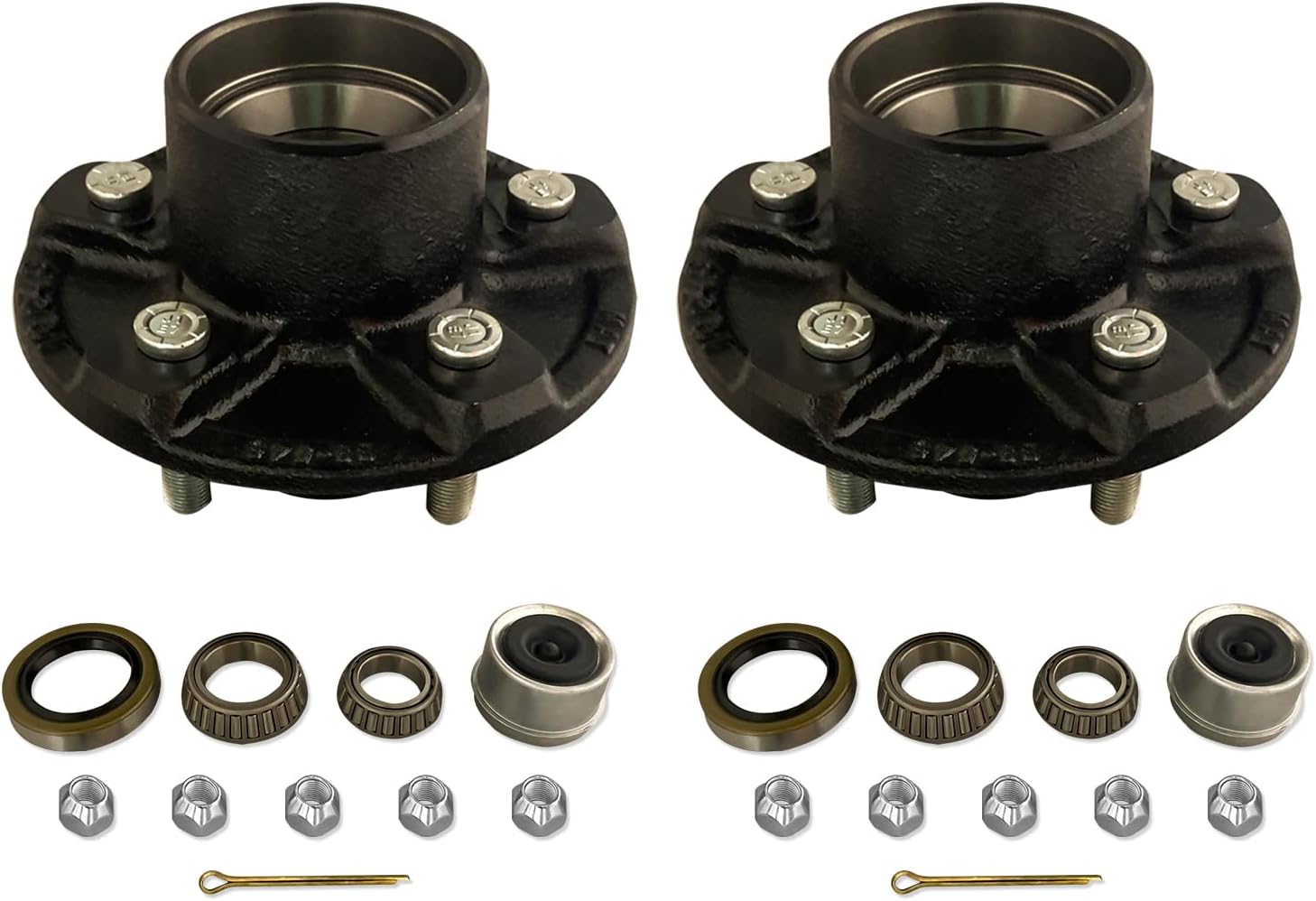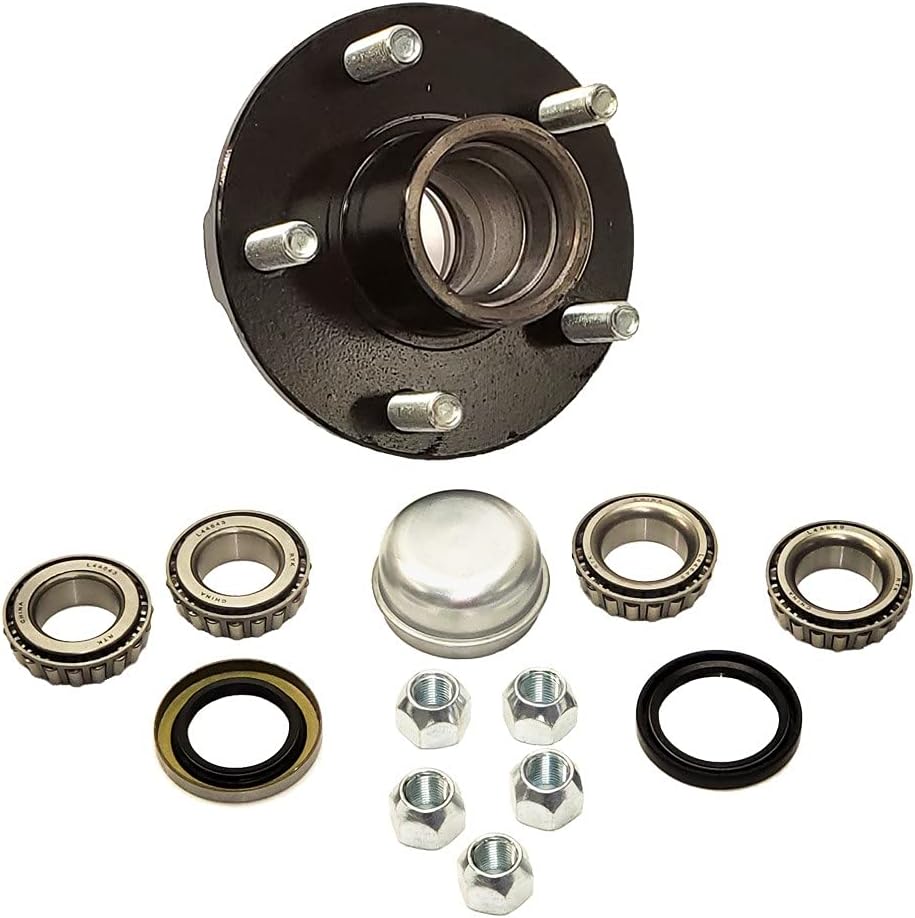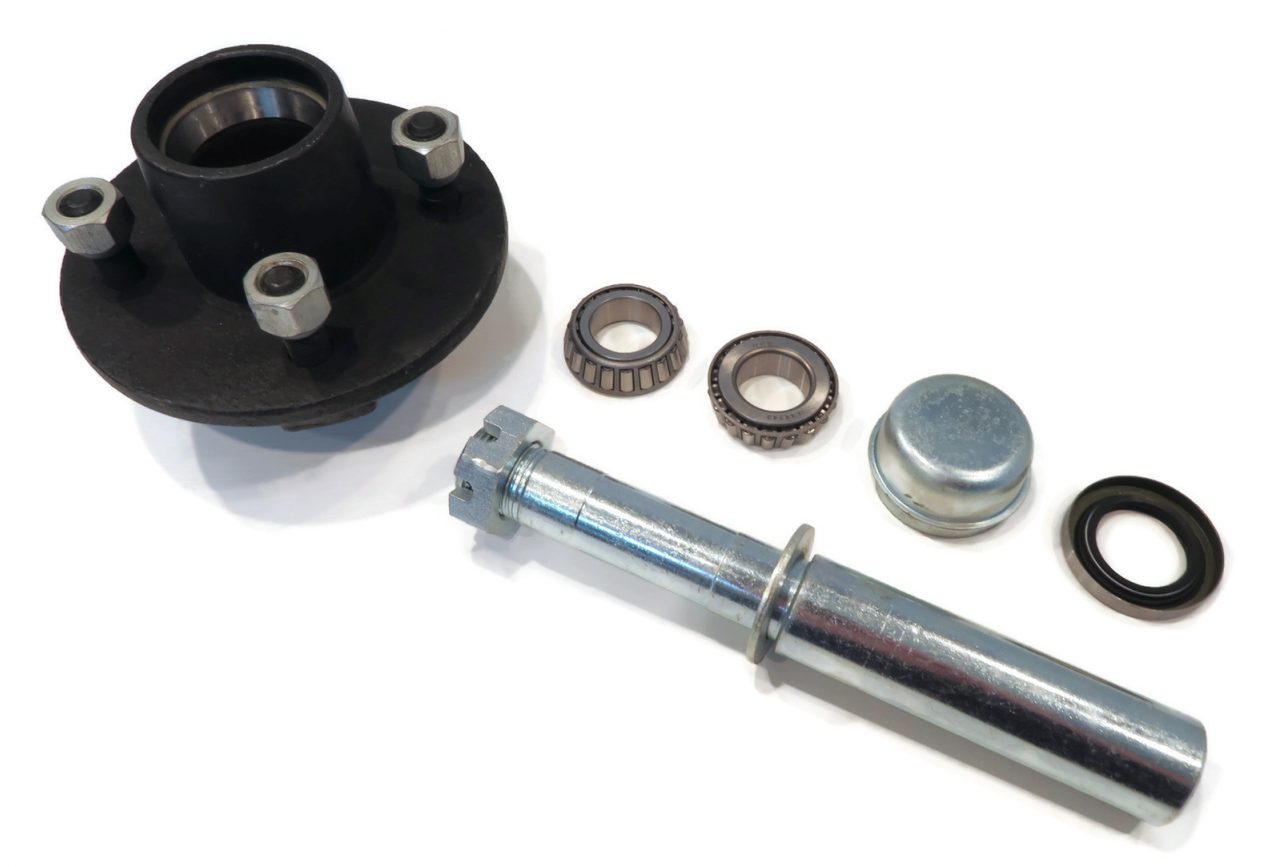Product Description
OEM Auto Brake Drum Wheel Hub for Trailer Axle Spare Parts
Product Description
Features:
1. Connect hubs solidly to shafts
2. Easy installation and disassembly
3. High torque transmission
4. Long lifetime and easy maintenance
5. Low notching effect
6. Reduction of wear and tear of expensive machine components
What is the Brake drum:
The brake drum is a type of cast iron shaped like a tambourine, which is fixed with the tire and rotates at the same speed. When braking, apply oil pressure to push the brake shoes to contact the brake drum inner rim, we can control the rotation of the wheel to achieve the purpose of braking by the friction force comes from contact.
Structure of drum brakes
Drum brakes are a brake system with brake drums (rotor) which rotate with the wheels. Inside each drum are
brake shoes fitted with brake linings (friction material). Pistons (pressure mechanism) press against the drums
from the inside to generate braking force, thus making is possible to decelerate and stop the vehicle.
Specification:
| Standard: | EN ,SAE ,GB |
| Quality Standard | OEM |
| Meterial Grade | GG 25 ,HT 250 |
| Chemical composition | C: 3.5-3.7 Si: 1.5-2.1% Mn: 0.6-0.9% P: <0.12% S: <0.1% Cr:0.6-0.9% Cu:0.3-0.8 |
| Mechanics performance | tensile strength: ≥ 250Mpa |
| Hardness | HB180-225 |
| Non-Destructive Test | Metallurgical test |
| Dimension inspection | dimension inspection report |
| Production according to | customer’s drawing or OEM number |
How drum brakes work
When the driver steps on the brake pedal, the power is amplified by the brake booster (servo system) and
changed into hydraulic pressure (oil-pressure) by the master cylinder. The pressure reaches the brakes on
the wheels via tubing filled with brake oil (brake fluid). The delivered pressure pushes the pistons on the
brakes of the 4 wheels. The pistons press the brake linings, which are friction materials, against the inside surfaces of the brake drums which rotate with the wheels. The linings are pressed on the rotating drums,
which in turn decelerate the wheels, thereby slowing down and stopping the vehicle.
Main part number of Brake drums:
Middle east and euro market:,3464230501,3464230601,571667290,571667560,571677630,1599012 etc
North America market :36,6,,,, etc South Africa market : TD0403, TD0334,TD0629,TD5713,TD0119,TD571,TD0630,etc
Also, we produce the brake drum according to the sample and drawing.
•100% dimensions runout and DTV inspection
•Material physical and chemical inspection
•Test density, flatness and parallelism
•Test performance and noise/NVH
Advantages:
With more than 10 years of experience, we know exactly what you need;
Strict quality control in raw material selection, production line, and pre-packing, which ensures the reliable
product quality as per customer’s request.
Prompt action on customer’s requirments.
Shipping way:
1) 0-100kg: express&air freight priority,
2) >100kg: sea freight priority,
3) As per customized specifications
Packing & Delivery:
1.Packing Detail: Each product packed with plastic preservative, EPE, foam plastic bag, Carton outside,
wood case or iron case or as per the customer’s special requirement. Besides, the custom package takes a
week to prepare in advance.
2.Delivery Detail: the fast International Shipping time takes 3 ~5 working days by DHL/UPS/FedEx, slow
shipping time takes 7~ 8 working days by DHL/UPS/FedEx/TNT, etc
FAQ:
1. Q: Why choose CZPT product?
A: We CZPT have our own plant– HangZhou CZPT machinery Co.,Ltd, therefore,
we can surely promise the quality of every product and provide you comparable price.
2. Q: Do you provide OEM Service?
A: Yes, we provide OEM Service.
3. Q: Do you provide customized casting parts?
A: Yes. Customers give us drawings and specifications, and we will produce accordingly.
4. Q: What is your payment term?
A: We provide kinds of payment terms such as L/C, T/T, Paypal, Escrow, etc..
If there’s anything we can help, please feel free to contact us.
| Casting Method: | Precision Casting |
|---|---|
| Casting Form Material: | Metal |
| Casting Metal: | Cast Iron |
| Samples: |
US$ 40/Piece
1 Piece(Min.Order) | Order Sample Samples in Stock
|
|---|
| Customization: |
Available
| Customized Request |
|---|
.shipping-cost-tm .tm-status-off{background: none;padding:0;color: #1470cc}
|
Shipping Cost:
Estimated freight per unit. |
about shipping cost and estimated delivery time. |
|---|
| Payment Method: |
|
|---|---|
|
Initial Payment Full Payment |
| Currency: | US$ |
|---|
| Return&refunds: | You can apply for a refund up to 30 days after receipt of the products. |
|---|

What is the primary function of an axle hub in a vehicle’s wheel assembly?
The primary function of an axle hub in a vehicle’s wheel assembly is to connect the wheel to the axle and provide a mounting point for the wheel bearings. Here’s a detailed explanation of the primary functions of an axle hub:
1. Wheel Mounting:
The axle hub serves as the component that connects the wheel to the vehicle’s axle. It is typically a cylindrical or disc-shaped structure located at the center of the wheel assembly. The hub contains bolt holes or studs that align with the corresponding holes or studs on the wheel, allowing for secure attachment and proper alignment of the wheel.
2. Bearing Support:
The axle hub provides a mounting point for the wheel bearings. Wheel bearings are crucial components that allow the wheel to rotate smoothly while supporting the weight of the vehicle. The hub contains a bearing race or races, which are machined surfaces that support the inner and outer wheel bearings. The bearings fit snugly into the hub and enable the wheel to rotate freely around the axle.
3. Load Transmission:
Another important function of the axle hub is to transmit the load from the wheel to the axle. As the vehicle moves, various forces act on the wheel, including the weight of the vehicle, acceleration and braking forces, and lateral forces during turns. The axle hub, along with the wheel bearings, helps distribute and transfer these forces from the wheel to the axle, allowing for smooth and controlled movement of the vehicle.
4. Hub Assembly Integration:
In many vehicles, the axle hub integrates with other components of the wheel assembly. For example, it may have provisions for attaching the brake rotor or drum, which are essential for the vehicle’s braking system. In vehicles with front-wheel drive or all-wheel drive, the axle hub may also incorporate features for connecting the CV (constant velocity) joint or driveshaft, allowing for power transmission to the wheels.
5. Wheel Alignment:
The axle hub plays a role in maintaining proper wheel alignment. The hub’s design and dimensions are critical in ensuring that the wheel is centered and aligned correctly with the vehicle’s suspension system. Proper wheel alignment is essential for optimal handling, tire wear, and overall vehicle performance.
In summary, the primary function of an axle hub in a vehicle’s wheel assembly is to connect the wheel to the axle and provide a mounting point for the wheel bearings. It facilitates the secure attachment of the wheel, supports the wheel bearings for smooth rotation, transmits loads from the wheel to the axle, integrates with other components of the wheel assembly, and contributes to proper wheel alignment. The axle hub is a critical component that enables safe and efficient operation of the vehicle’s wheels.

Are there specific tools required for DIY axle hub replacement, and where can I find them?
When undertaking a DIY axle hub replacement, certain tools are needed to ensure a smooth and successful process. Here are some specific tools that are commonly required for DIY axle hub replacement and where you can find them:
- Jack and jack stands: These tools are essential for raising the vehicle off the ground and providing a stable support system. You can find jacks and jack stands at automotive supply stores, hardware stores, and online retailers.
- Lug wrench or socket set: A lug wrench or a socket set with the appropriate size socket is necessary to loosen and tighten the lug nuts on the wheel. These tools are commonly available at automotive supply stores, hardware stores, and online retailers.
- Torque wrench: A torque wrench is required to tighten the lug nuts on the wheel and other fasteners to the manufacturer’s recommended torque specifications. Torque wrenches can be found at automotive supply stores, tool stores, and online retailers.
- Pry bar: A pry bar is useful for gently separating the axle hub assembly from the mounting point, especially if it is tightly secured. Pry bars are available at automotive supply stores, hardware stores, and online retailers.
- Hammer: A hammer can be used to tap or lightly strike the axle hub assembly or its components for removal or installation. Hammers are commonly available at hardware stores, tool stores, and online retailers.
- Wheel bearing grease: High-quality wheel bearing grease is necessary for lubricating the axle hub assembly and ensuring smooth operation. Wheel bearing grease can be purchased at automotive supply stores, lubricant suppliers, and online retailers.
- Additional tools: Depending on the specific vehicle and axle hub assembly, you may require additional tools such as a socket set, wrenches, pliers, or specific specialty tools. Consult the vehicle’s service manual or online resources for the specific tools needed for your vehicle model.
To find these tools, you can visit local automotive supply stores, hardware stores, or tool stores in your area. They typically carry a wide range of automotive tools and equipment. Alternatively, you can explore online retailers that specialize in automotive tools and equipment, where you can conveniently browse and purchase the tools you need.
It’s important to ensure that the tools you acquire are of good quality and suitable for the task at hand. Investing in quality tools can make the DIY axle hub replacement process more efficient and help achieve better results. Additionally, always follow the manufacturer’s instructions and safety guidelines when using tools and equipment.
In summary, specific tools are required for DIY axle hub replacement, such as a jack and jack stands, lug wrench or socket set, torque wrench, pry bar, hammer, and wheel bearing grease. These tools can be found at automotive supply stores, hardware stores, tool stores, and online retailers. Acquiring quality tools and following proper safety guidelines will contribute to a successful DIY axle hub replacement.

Where can I access reliable resources for understanding the relationship between axles and hubs?
When seeking reliable resources to understand the relationship between axles and hubs, there are several avenues you can explore. Here’s a detailed explanation:
1. Manufacturer’s Documentation: The first place to look for information is the official documentation provided by the vehicle manufacturer. Consult the owner’s manual or technical service manuals for your specific vehicle model. These resources often contain detailed explanations, diagrams, and specifications regarding axles and hubs, including their relationship and functionality.
2. Automotive Repair and Service Manuals: Automotive repair and service manuals, such as those published by Haynes or Chilton, can be valuable sources of information. These manuals provide comprehensive guidance on various vehicle systems, including axles and hubs. They often include step-by-step instructions, diagrams, and troubleshooting tips to help you understand the relationship between axles and hubs.
3. Online Forums and Communities: Online forums and communities dedicated to automotive enthusiasts or specific vehicle makes and models can be excellent resources. These platforms provide opportunities to interact with experienced individuals who may have in-depth knowledge about axles and hubs. Participating in discussions, asking questions, and sharing experiences can help you gain insights and a better understanding of the relationship between axles and hubs.
4. Professional Mechanics and Technicians: Consulting with professional mechanics or technicians who specialize in your specific vehicle make or have expertise in axles and hubs can provide valuable information. They can explain the relationship between axles and hubs, answer your questions, and provide practical insights based on their experience. Local service centers or authorized dealerships are good places to seek professional advice.
5. Educational Institutions: Technical schools, vocational programs, and community colleges often offer courses or resources related to automotive technology. Consider exploring their curriculum or reaching out to instructors who can provide educational materials or guidance on understanding axles and hubs.
6. Online Research and Publications: Conducting online research can lead you to various publications, articles, and websites that provide information on axles and hubs. However, it’s crucial to critically evaluate the credibility and reliability of the sources. Look for reputable websites, publications from trusted automotive organizations, or articles written by experts in the field.
Remember to cross-reference information from multiple sources to ensure accuracy and reliability. It’s also important to stay up to date with the latest advancements and industry standards in the automotive field, as knowledge and technology can evolve over time.
In summary, to access reliable resources for understanding the relationship between axles and hubs, consider consulting manufacturer’s documentation, automotive repair manuals, online forums, professional mechanics, educational institutions, and conducting online research. By exploring these avenues, you can gain comprehensive knowledge and a better understanding of the relationship between axles and hubs.


editor by CX 2023-11-27